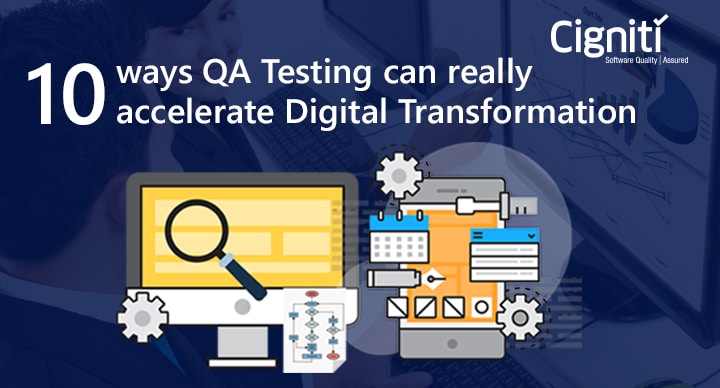Trends in the Digital Payments Sector to Look Out For in 2022
|
Listen on the go!
|
The digital mode of payment has emerged in the last two years due to the pandemic. The world has seen a spike in digital payment transactions. Payments are now faster, frictionless, contactless, embedded, and transparent.
What more will we see in 2022? What can be enhanced further?
- Better Infrastructure with more speed and cost efficiency,
- Other payment methods that will benefit both customers and businesses
- Tighter security to gain the trust of customers
Customers and payment stakeholders should be able to reap the benefits of the new payment innovations.
Infrastructure enhancements:
Payment SaaS as the only way forward
Software as a Service is a model where you can get all the benefits of the software without having to do any housekeeping. You can access and connect to software in the cloud through the internet.
Without having to download any patches or software, the latest and upgraded version will be available for use. The Service provider will maintain the hardware and software and will ensure the availability and security of the same.
So, Payment SaaS will be the way going forward as it will help to scale up a payment solution quickly to meet the market needs and industry innovations. Meeting the security and payment compliance needs will be much easier. Maintenance costs will be very low, and availability will be high.
There are many players who have already come up with Payment SaaS:
Square, Inc., which is now Block, Inc., is a digital payments company based in San Francisco that focuses on providing mobile payment systems, point-of-sale systems, hardware payment products, and other small business services.
Another company, Paddle, provides a SaaS Commerce platform for payments, subscription and billing management, manual invoicing, sales tax, financial compliance, and fraud.
2Checkout, an online payment processing platform helps firms in receiving global and local payments. It provides global tax management and compliance services, including professional management of VAT, sales tax and remittances that are applicable globally. It manages customer subscriptions and sends timely renewal reminders.
Bill.com automates bill payments and invoicing processes, as well as cash flow management.
There are many others who already exists in the payment world today and many new players who are upcoming.
Adoption of Blockchain Technology
An increase in payment fraud and chargebacks need to be handled with immediate effect. Blockchain technology comes into the picture to provide enhanced data security, prevent fraud, protect against cybercrime, and increase trust among the participants in the payment chain.
A blockchain, as the name suggests, is a chain of blocks. Each block contains a unique id, timestamp, and payment data, which is added with a secured hash to the existing chain. All participants can view the blocks of transactions but cannot alter a block without the validation of other participants.
There has been more and more adoption of blockchain technology in payments since
- It is real time as fund transfers are completed in seconds.
- Intermediaries are removed, which lowers the cost of payments.
- It is secure and transparent.
Emergence of Central Bank Digital Currency
The popularity of cryptocurrency has posed a threat to banking and financial institutions. But with the launch of new coins or cryptocurrencies, digital scams and cyberattacks are bound to occur. As a solution, financial institutions have come up with their own digital currency.
The central bank of a country issued the digital equivalent of the country’s fiat currency which is known as Central Bank Digital Currency (CBDC). This gives the central bank of the country the control of operating the countries’ digital economy.
CBDC uses blockchain technology, so along with blockchain technology, CBDC will also emerge globally. This will secure and improve cross-border payments by removing delays and lowering the cost of cross-border transactions.
It is expected that China will officially unveil its CBDC – digital yuan during the Winter Olympics in early 2022. American social media company Meta is also expected to launch its Diem project in 2022.
New Payment Options:
UPI Payments using feature phones
Currently, the digital payment innovations are available to smart phone users who have internet connections only. If these features were available on feature phones also, it would increase the number of digital transactions manifold. UPI payments using feature phones are available now, but there are several steps that might not be convenient for feature phone users. Simplifying the steps and enabling every user with a phone to benefit from digitalized payments will be one of the exploratory areas in 2022.
Buy Now, Pay Later
Buy Now, Pay Later option was a boon to customers in this pandemic as it provided the option of paying in installments across a customer’s preferred timeline. There are no hidden fees or charges; the process is easy and fast, and so it has been widely accepted. PayPal, Zip, Affirm, Amount, Sezzle, Spitlit, Klarna, and Afterpay are some of the payment providers that provide this payment option. More solutions will come up, and existing solutions will have this payment option added.
Increase in Acceptance of Payments Using Reward Points
There is space for improvement in the redemption of rewards and loyalty points. Though the rewards are provided, they are not accepted by all businesses, so customers or businesses cannot enjoy the benefit of being rewarded.
Payments using reward points will be widely accepted by all businesses going forward. There will be reward wallets, and their use will give digital transactions a new direction.
New Means of Controlling Fraud and Enhancing Security:
Biometric Authentication and Biometric Payments
With the increase in the number of digital transactions, digital fraud has also grown manifold, so customers need to be provided the security and trust to enable them to use the payment innovations.
Verifying a user through his biological traits like iris, voice, facial characteristics, retina, and fingerprint to access one’s account will become more popular as an authentication method for payment transactions. It is simple, cannot be hacked or duplicated easily, and customers do not need to remember PINs or passwords.
Both physical and behavioral biometrics, if applied together as authentication methods for card-not-present (CNP) transactions, that is, transactions over the internet, through mail, or telephone, will provide an enhanced security layer and protection since these transactions are more susceptible to fraud.
Biometric payments are also on the way with BNP Paribas, The Royal Bank of Scotland and NatWest offering Biometric payment cards to customers. The biometry is securely stored on the card and is matched with the one produced during the payment. Amazon’s Alexa, Google Assistant, Venmo, and PayPal are some of the players who have already brought in voice-enabled payments.
Artificial Intelligence
With the advancement of payment technology, the traditional fraud detection systems have become outdated. With real-time payments, real-time fraud detection systems need to be in place.
This is where artificial intelligence and machine learning come into play in solving business problems like cybercrime and digital fraud in today’s real-time world. With artificial intelligence and machine learning, payment solutions will focus on customer lifestyle and be more customer-centric. Harnessing machine learning and artificial intelligence to safeguard customer data against fraudulent activity will provide a multi-layered real-time fraud solution.
Conclusion
With the transition from cash to digital payments, many new technologies, payment modes, and security measures will be introduced to ease customer’s lives. These trends will shape the future of payments. New innovations will only lead to a better and more comfortable world.
Cigniti’s capabilities in areas such as omni-channel banking, retail banking, corporate banking, centralized banking, mortgages, cards, and payment gateways have been validated by its experience as the core banking Digital Transformation and testing partner for pioneering mobile-only banks in the US and UK. Cigniti has extensive expertise in testing a wide range of industry standard products, including T24, Finacle, Flexcube, Bancs24, and Vision Plus, as well as regulatory compliance, including BASEL, BCBS 239, SEPA, AML, FATCA, and others.
Schedule a discussion with our Banking and Digital Transformation experts to find out more about the latest trends in the digital payments sector and how to achieve high levels of customer satisfaction and retention.





Leave a Reply